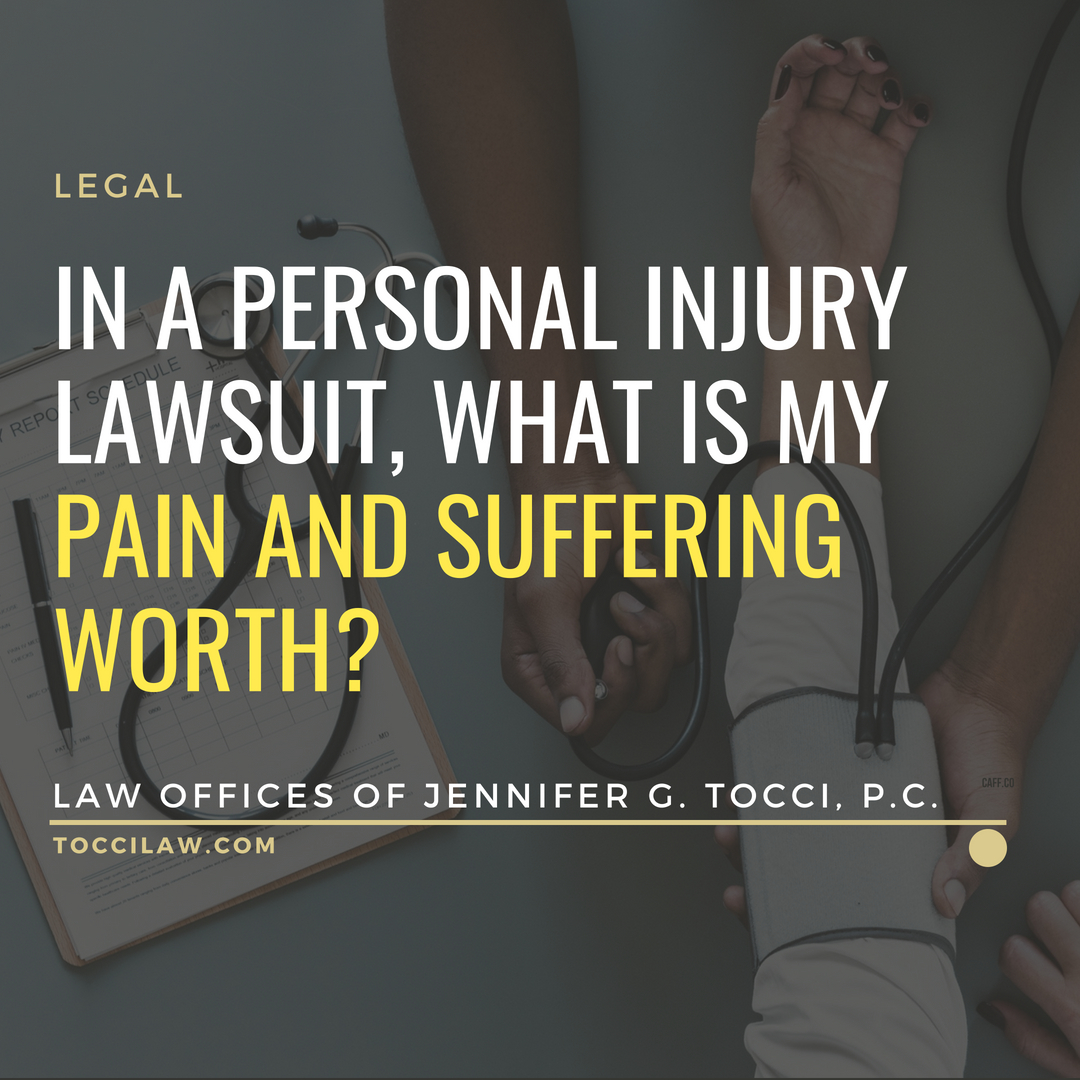When you’re in an accident and suing for the injuries you sustained as the result of another party’s negligence, there are two main prongs that must be established: 1) liability (is the party at fault?), and 2) damages (dollar amount of injury and loss). It is essential that you are able to prove both liability and damages; you must be able to show that the other party was responsible for your injuries and that you have suffered injuries and loss. In personal injury lawsuits, there are ordinarily two types of damages that form your total damages computation: general damages and special damages. General damages are non-economic damages that are comprised of intangible losses, such as pain and suffering, disfigurement, and loss of amenities. Special damages can be measured in money and include medical expenses, loss of wages, household expenses, and potential loss of earnings. Additional categories of damages exist and may accompany your individual personal injury lawsuit. For example, you may have a claim for emotional damages. An attorney at our firm can assess your case for all potential damages to ensure you receive the maximum compensation for your injuries.
How is the dollar amount of an injury calculated?
First, in New York State, you must have a “serious” injury as defined by the law in order to be compensated for your injuries and to start a lawsuit (see earlier blog for more information on “serious” injuries). Therefore, if you do not meet the legal threshold to start a lawsuit, your injuries will likely not be worth any money. If you have suffered an injury legally worthy of pursuing a lawsuit, your attorney will calculate your damages and gather proof to support his/her findings. Your special damages will be measured. These are your actual expenses and vary from case-to-case depending on what you paid out of pocket, lost in earnings or will lose in earnings. These expenses are hard numbers, meaning the dollar figure is easily identifiable. For example, if you have medical bills that you paid for out of your own funds, the cost of those bills will be one of your actual expenses.
How is the worth of pain and suffering determined?
Every personal injury lawsuit should include a claim for pain and suffering. In addition to special damages (see the above paragraph), every personal injury case should consist of a claim for general damages (i.e.: pain and suffering). This amount depends on the nature of your injury suffered, the reasonable and necessary treatment, and future pain and suffering that is expected to be experienced. Pain and suffering is challenging to calculate because you do not get a bill for it, as you do for medical treatment. As a result, several factors are taken into consideration when gauging the worth of your pain and suffering. The length of treatment that is reasonable and necessary is a significant component in determining the worth of your pain and suffering. Additionally, the total cost for your reasonable and necessary medical treatment will form another basis in determining the value. Your recovery time and process will also be evaluated. Frequently, insurance companies try to diminish the value of your pain and suffering by pointing out “weaknesses” in your case, such as gaps between visiting physicians, and failure to follow-up with medical treatment or go to physical therapy. Each insurance company values the worth of pain and suffering for the same injuries differently. This is where our skilled attorneys can make a difference.
The responsible party will try to refute your claim for damages. For example, the responsible party may assert that he/she is not responsible for your damages and/or that those damages are not worth that much. [Sidebar: even where you are successful proving liability and damages, your ability to collect compensation may be limited by insurance policy limits.]
Is wrongful death considered pain and suffering?
In New York State, you do not have the ability to recover for the loss of enjoyment of life when the injured party passes away. The only damages in a wrongful death case would be the pecuniary loss to the family. [Sidebar: in certain circumstances, a child may recover for loss of parental guidance and a spouse for loss of services.] However, a claim for conscious pain and suffering should be distinguished from a wrongful death claim. Compensation may still be sought for pain and suffering, even if experienced only briefly before death.
If you would like to speak with one of our attorneys and receive a personal case evaluation, we invite you to schedule a free 30-minute consultation with the Law Offices of Jennifer G. Tocci, P.C., (631) 343-7676.
Attorney Advertising. This blog post is designed for general information only. The information presented at this site should not be construed to be neither formal legal advice nor the formation of a lawyer-client relationship. Prior results do not guarantee a similar outcome. New York State only.










